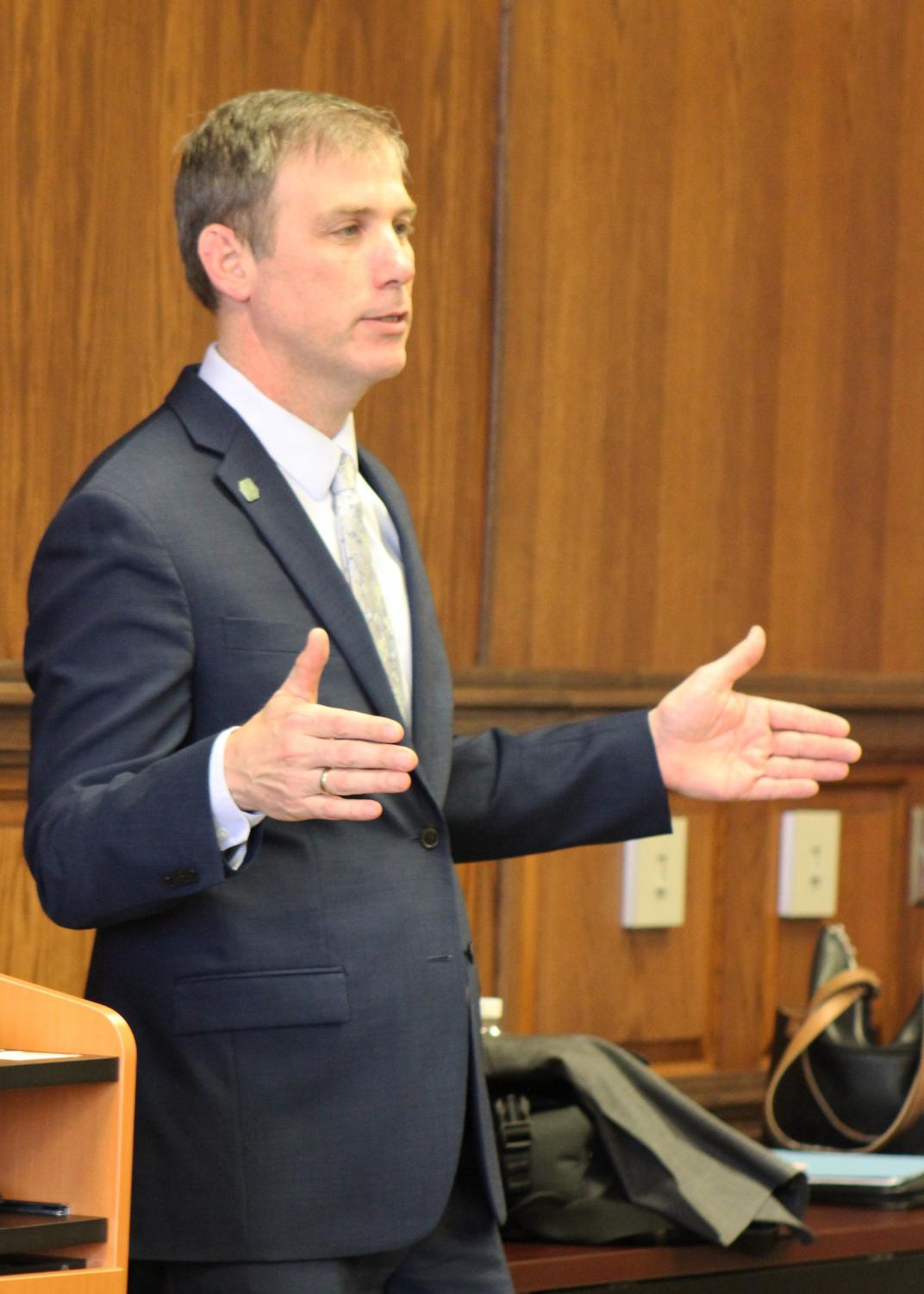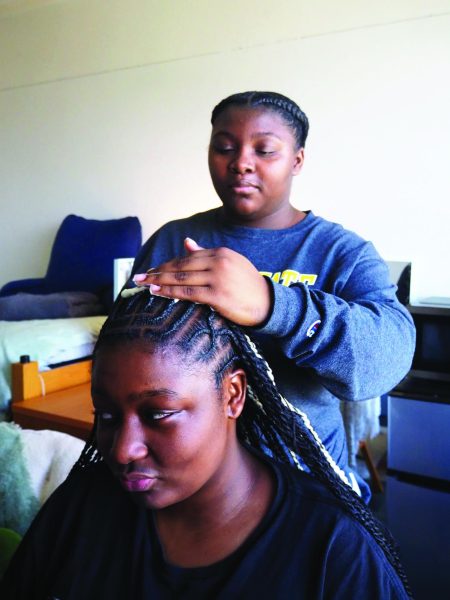NE State College System chancellor visits WSC
April 2, 2019
Faculty, staff and students all had an opportunity on March 27 and 28 to meet with and ask questions to Nebraska State College System Chancellor Paul Turman in the Elkhorn Room in Kanter Student Center.
On March 28 there were two sessions. The first was at 8:30 a.m. for faculty with about six or seven people in attendance.
The second was at 9:30 a.m. for staff with well over 20 people attending only leaving standing room.
“I was happy to see standing room only in the morning open session,” said John Dunning, vice president of information technology.
As introduced by President Marysz Rames, Turman started as Nebraska State College System (NSCS) chancellor on January 2.
“As part of his orientation to the system, he’s been out visiting with the campuses,” President Rames said. “This is an opportunity for you to have conversation with the chancellor.”
Turman started each session giving a little bit of information about himself so everyone would be able to know him on a little more of a personal level.
“I actually grew up in a small town in South Dakota,” Turman said. “Pierre is where I most recently have come from, but Fort Pierre is a small town right next to it that’s a separate county, separate school district and two different time zones. I grew up there.”
Turman said he eventually went on with schooling to get a Master’s Degree at South Dakota State University, and then went to University of Nebraska-Lincoln to get his PhD in interpersonal communications. He said his degrees have nothing to do with what he is doing right now.
“I think anybody that has found their way through the academic cycle, you realize you go to college thinking you are going to do one thing,” Turman said. “And then a lot of times you end up finding a different path way.”
He taught at the University of Northern Iowa for two sections when getting his degree and went on to teach for six more years.
He was offered tenure, but received other jobs offers that he saw as more beneficial. He mentioned that he has worked his way up through the college system.
“Even though each of the institutions are in relatively small towns, I would say that the communities themselves are uniquely different,” Turman said. “Peru doesn’t look anything like Wayne; Wayne doesn’t look anything like Chadron.”
Turman said he has seen that most of the students that attend Peru, Chadron and Wayne do so because of geographical proximity, and each institution offers unique programs that each school does well at.
“You have a unique niche about what it is that you deliver to the region, and then as a result you are attracting different types of students to those various programs as well.”
Turman made a point to mention that the students are the priority and he plans on being back three to four times a year to each of the schools.
“I’m excited to hear the chancellor’s commitment to visit campus frequently,” Dunning said. “The level of engagement our campus community demonstrated as he begins that practice speaks well for Wayne State.”
Randy Bertolas, geography professor and chair of the History, Politics, and Geography department had a question that dealt with funding for students. He asked Turman if he could explore why there is more money for sports rather than academic events.
Turman said he would find and look into the policy that Bertolas was referring to.
“I would contend that there was never really a pool of dollars in the system office or at the board that was dedicated to this,” Turman said. “Those are always institutional dollars, and if it dried up within the last few years, I’m assuming it was the decrease in enrollment you had.”
Turman said that it could be due to trying to make up for lack of tuition money that came in, and will be rebuilt in years to come with increases in student attendance.
“Yes, you had about a 10 percent increase in enrollment last year,” Turman said. “If you are able to stabilize that, then I think it becomes warranted to be able to reinvest those back into the various programs if that ends up being the choice of the administration.”
Turman said when operating in the red or the black, discretionary funds are the easiest cut to go for because it means that you don’t have to eliminate positions.
He said he doesn’t have any plans for any specific institution. Turman has four main priorities that he would like to focus on in his first year.
“The first one is system level strategic planning process,” Turman said. “The second one is to make sure we have good academic programs that lead them into the third area— out into the work force. The fourth area is around the area of affordability.”
He said the plan is similar to previous years, but they have gotten stronger with where they want to go.
“We have a strategic plan,” Turman said. “If you go back to three different iterations of that, it’s very similar to what was put into place in 2006. What’s missing from that strategic plan are really strong metrics.”
He said the four main things to focus on are students’ success, how to get students to attend WSC, make it to senior year, and make sure they have access to a four year degree.
“My one mantra always is: Is that what’s best for the students that we are serving?” Turman said.
Turman was asked a question about what he feels about the challenges of having universities and a state college system in addition to the independent privates.
“I think there’s both good and bad,” Turman said. “The one thing I certainly tend to enjoy is the fact that the university system is there along with other undergraduate students.
“Come here, take your first three years of course work, get 90 credit hours completed, and then we partner with a professional program or graduate program at another institution or even within our own. Allow the first year of the graduate program to count toward completing the senior year.”
Turman said that instead of going to college and then a graduate program with it taking six or more years, it can be done in five.
“There is always going to be a place for students to come, reside, and take classes,” Turman said.









